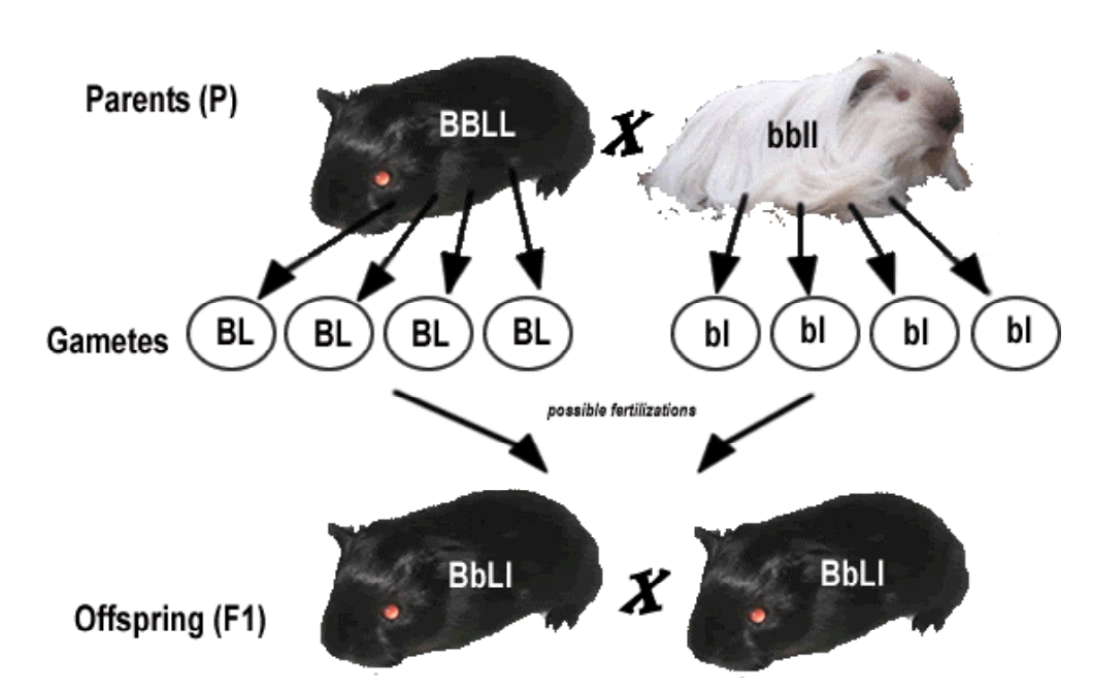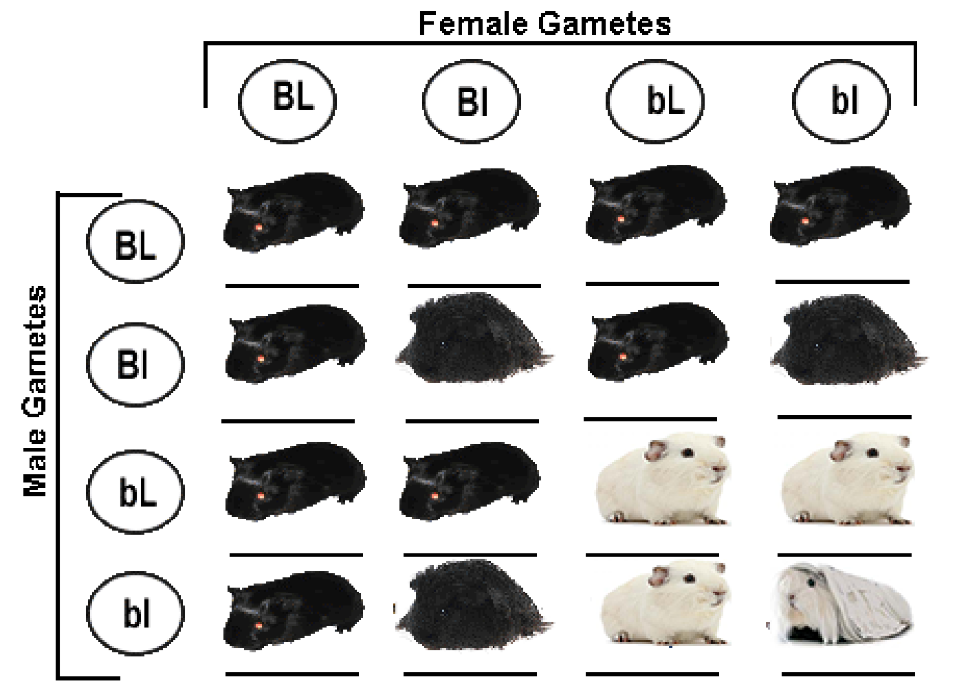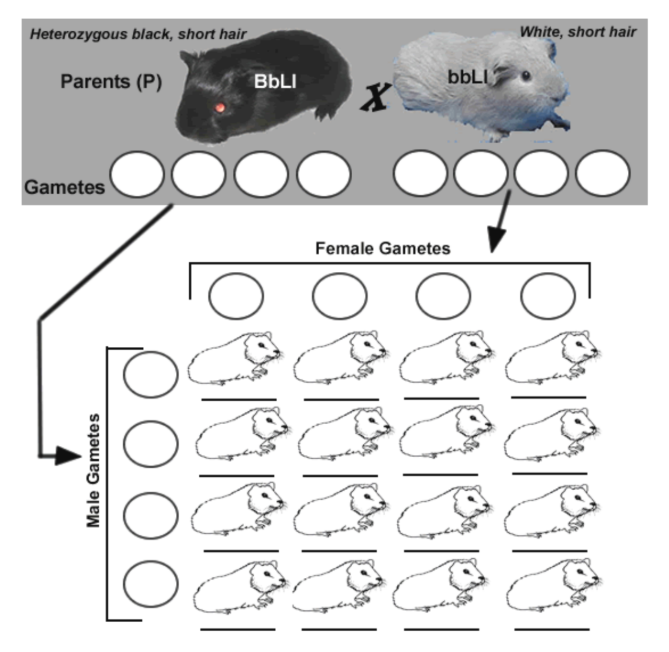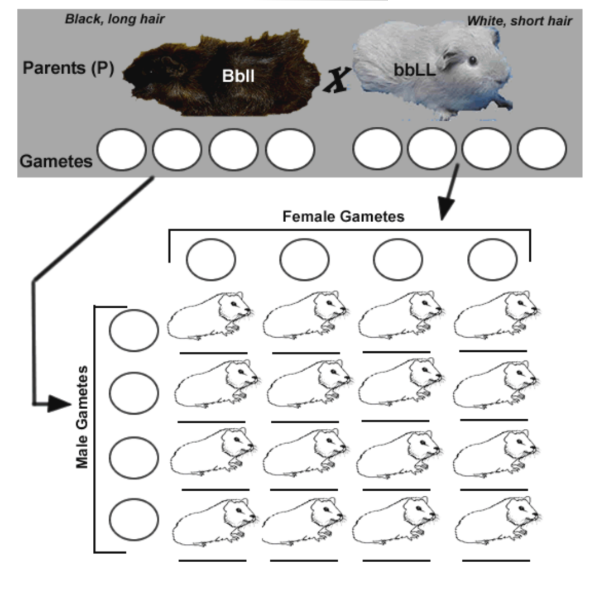Dihybrid Crosses in Guinea Pigs
- Page ID
- 21249
A cross (or mating) between two organisms where two genes are studied is called a DIHYBRID cross. The genes are located on separate chromosomes, so the traits themselves are unrelated.

BB = black
Bb = black
bb = white
LL = short hair
Ll = short hair
ll = long hair
Practice
1. Fill out the genotypes of each of the offspring to determine how many of each type of offspring are produced.


2. How many of the offspring (out of 16) are:
Black, Short ______
Black, Long ______
White, Short ______
White, Long ______

3. How many of the offspring are:
Black, Short ______
Black, Long ______
White, Short ______
White, Long ______

4. How many of the offspring are:
Black, Short ______
Black, Long ______
White, Short ______
White, Long ______


